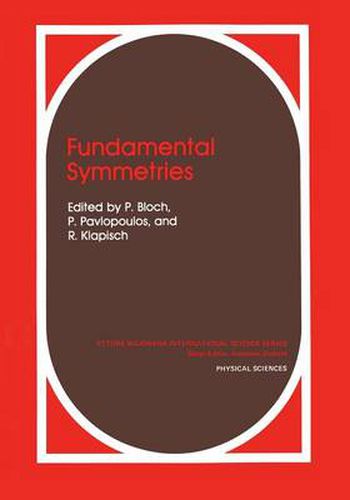Readings Newsletter
Become a Readings Member to make your shopping experience even easier.
Sign in or sign up for free!
You’re not far away from qualifying for FREE standard shipping within Australia
You’ve qualified for FREE standard shipping within Australia
The cart is loading…






This title is printed to order. This book may have been self-published. If so, we cannot guarantee the quality of the content. In the main most books will have gone through the editing process however some may not. We therefore suggest that you be aware of this before ordering this book. If in doubt check either the author or publisher’s details as we are unable to accept any returns unless they are faulty. Please contact us if you have any questions.
The first course of the International School on Physics with Low Energy Antiprotons was held in Erice, Sicily at the Ettore Majorana Centre for Scientific Culture, from September 26 to October 3, 1986. The purpose of this School is to review the physics accessible to experiments using low energy antiprotons, in view of the new era of the CERN LEAR ring opened by the upgrade of the antiproton source at CERN (ACOL). In 1986 the first course covered topics related to fundamental symmetries. These Proceedings contain both the tutorial lectures and the various contributions presented during the School by the participants. The con tributions have been organized in six sections. The first section is devoted to gravitation, a particularly hot topic in view of recent speculations about deviations from Newton’s and Einstein’s theories. Section II covers various problems related to the matter-antimatter symmetries such as comparison of the proton and antiproton, inertial masses or spectroscopy of antihydrogen or other antiprotonic atoms. CP and CPT violations in weak interaction are presented in Section III. The test of symmetries in atomic physics experiments and the strong CP problem are covered in Section IV. Section V groups contributions related to high prec~s~on measurements of simple systems like protonium, muonium or the anomalous moment of the muon. The last section is devoted to the experimental challenge of polar izing antiproton beams.
$9.00 standard shipping within Australia
FREE standard shipping within Australia for orders over $100.00
Express & International shipping calculated at checkout
This title is printed to order. This book may have been self-published. If so, we cannot guarantee the quality of the content. In the main most books will have gone through the editing process however some may not. We therefore suggest that you be aware of this before ordering this book. If in doubt check either the author or publisher’s details as we are unable to accept any returns unless they are faulty. Please contact us if you have any questions.
The first course of the International School on Physics with Low Energy Antiprotons was held in Erice, Sicily at the Ettore Majorana Centre for Scientific Culture, from September 26 to October 3, 1986. The purpose of this School is to review the physics accessible to experiments using low energy antiprotons, in view of the new era of the CERN LEAR ring opened by the upgrade of the antiproton source at CERN (ACOL). In 1986 the first course covered topics related to fundamental symmetries. These Proceedings contain both the tutorial lectures and the various contributions presented during the School by the participants. The con tributions have been organized in six sections. The first section is devoted to gravitation, a particularly hot topic in view of recent speculations about deviations from Newton’s and Einstein’s theories. Section II covers various problems related to the matter-antimatter symmetries such as comparison of the proton and antiproton, inertial masses or spectroscopy of antihydrogen or other antiprotonic atoms. CP and CPT violations in weak interaction are presented in Section III. The test of symmetries in atomic physics experiments and the strong CP problem are covered in Section IV. Section V groups contributions related to high prec~s~on measurements of simple systems like protonium, muonium or the anomalous moment of the muon. The last section is devoted to the experimental challenge of polar izing antiproton beams.